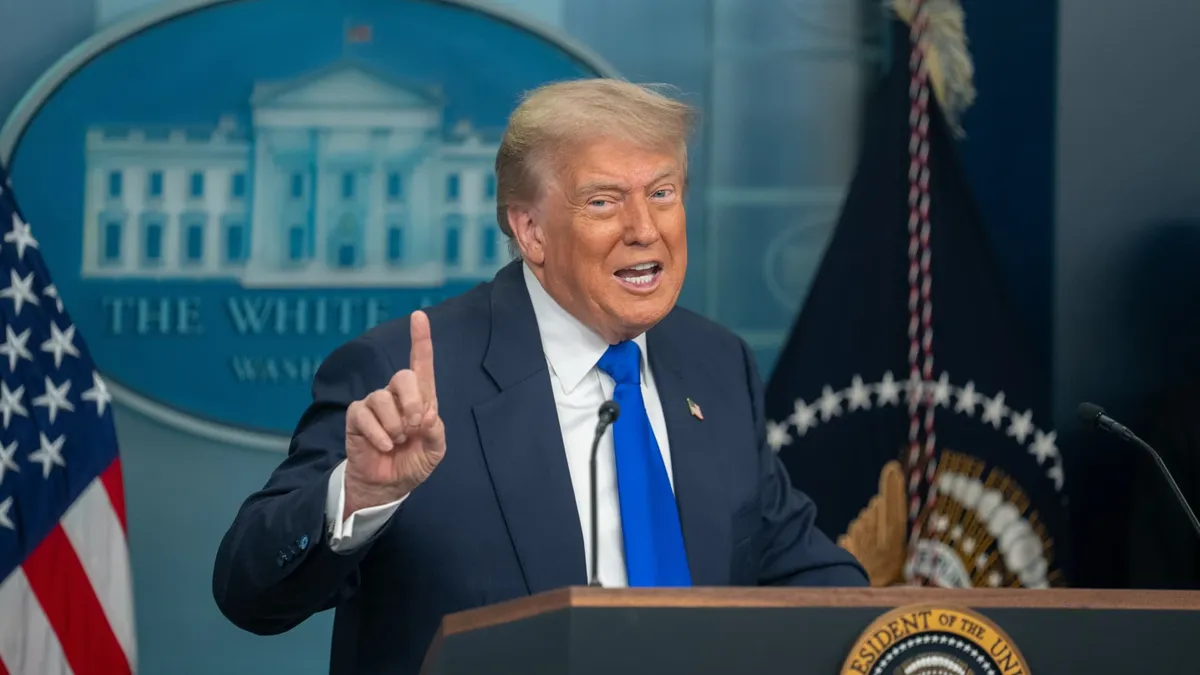
All eyes are currently on the ongoing negotiations between the United States and the European Union as both parties race against time to finalize a trade deal. With only days left until the culmination of a 90-day reprieve on U.S. President Donald Trump’s controversial reciprocal tariffs, the pressure is mounting. If an agreement is not reached by July 9, the EU goods imported to the U.S. could face tariffs soaring as high as 50%.
Should the U.S. and EU fail to strike a deal, it is expected that the EU will promptly implement retaliatory measures targeting a broad spectrum of U.S. goods. These measures, which have also been temporarily suspended, could significantly impact the trading dynamics between these two economic powerhouses.
The trade relationship between the U.S. and the EU is not only vital but also one of the largest in the world, accounting for approximately 30% of global goods trading, as reported by the European Council. In 2024, the trade value between these transatlantic partners reached around 1.68 trillion euros (equivalent to $1.98 trillion), encompassing both goods and services. Notably, the EU recorded a goods surplus of 198 billion euros, while it faced a deficit of roughly 148 billion euros in services trade, resulting in an overall trade surplus of about 50 billion euros.
President Trump has frequently voiced concerns regarding the trade relationship between Washington and Brussels, labeling it as unfair and accusing the EU of exploiting the U.S. market. This ongoing tension has made the negotiations increasingly complex and protracted.
The pace of the U.S.-EU negotiations has been notably sluggish, with sources indicating that a minimal political deal could be the best outcome for the EU at this juncture. European Commission President Ursula von der Leyen emphasized the goal of reaching an agreement in principle, acknowledging that a comprehensive deal would be unattainable within the current timeframe.
Von der Leyen reiterated that if no agreement is finalized, all options remain on the table. Meanwhile, European Trade Commissioner Maros Sefcovic shared his optimism after productive discussions with U.S. officials in Washington D.C., stating, “The work continues. Our goal remains unchanged: a good and ambitious transatlantic trade deal.”
Despite the efforts, skepticism surrounding the potential for a robust trade agreement prior to the deadline persists. Experts, including former U.S. Ambassador to the EU Anthony Gardner, expressed doubt about reaching a comprehensive deal, suggesting that a detailed agreement could encompass thousands of pages. Instead, Gardner anticipates a more straightforward arrangement akin to the heads of terms that the U.S. previously signed with the UK.
Carsten Nickel, managing director at Teneo, further elaborated that a broad agreement may be the most feasible outcome for the EU, aiming to buy time for future negotiations. He indicated that the initial deal might include the EU’s acceptance of a 10% baseline tariff from the U.S., paving the way for discussions about sectoral exemptions.
Even if a preliminary agreement is achieved, uncertainties will linger. Nickel warned that any deal would likely remain under constant negotiation, subject to the risk of the U.S. changing its stance or losing interest. He also noted that he does not foresee the EU imposing retaliatory measures unless Trump enacts full tariffs next week, suggesting that even in a challenging situation, the EU would proceed cautiously.